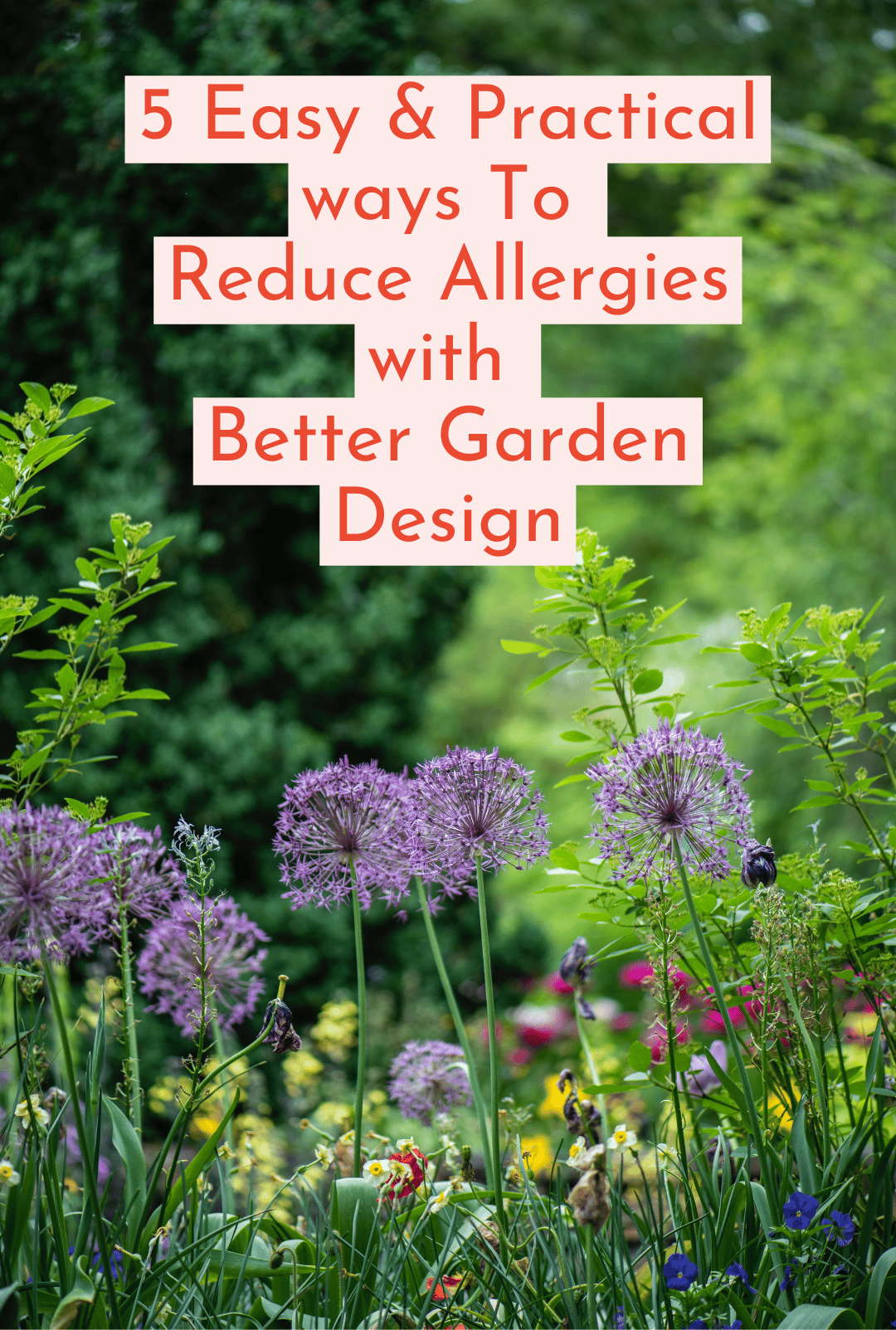Is a Hypo-allergenic landscape possible?
Is gardening with allergies a problem for you? Can gardening cause allergies to worsen?
Can you make your garden less irritating to your allergies?
Yes (to all of the above) – and garden and planting design can help you drastically change your environment so you feel better.
If you suffer from allergies you likely have a particular allergy season that is worse for you. For many it is certain times in the spring when pollen counts spike for a plant that lives in your ecosystem. For others (like me) it is fall and winter with mold and the pollutants of recycled interior air. Whatever it is, the more you can hone in on the culprit and eliminate or reduce these allergens from your garden and surroundings the better. The design of your garden can play a significant role in an allergy sufferers battle to breath.

Using OPALS to choose plants
In his book, The Allergy Fighting Garden, Thomas Leo Ogren, lays out a ranking system for plants called OPALS. The opals allergy scale (OPALS = Ogren Plant Allergy Scale) has been adopted by the American Lung Association and the U.S. Department of Agriculture Urban and Community Forest Service and is also being added to plant labels in the UK. OPALS is a great tool to learn how to manage, choose and alter the plants in your landscape to reduce garden allergies that trigger asthma.
If a plant ranks low (1-3) on the scale it is basically benign to allergy sufferers. But if it ranks high (9-10) then it has an extremely high potential to allergic reactions. If you suffer with allergies and are making a garden – knowing a plant’s OPALS score is helpful to make sure you aren’t planting something problematic.
The complete OPALS scale for plants is in the book, Allergy-Free Gardening. In the book, over 5,000 plants are individually allergy-ranked.
OPALS is a tremendous resource, but it isn’t the only way to fight environmental allergies. Beyond OPALS, there are other practical steps you can take to reduce the allergy potential of your landscape and garden. Keep in mind that proximity matters very much. A highly allergenic plant in your own yard will expose you and your family much more than it will impact your neighbors.
5 Easy and Practical Ways To Reduce Garden Allergies with garden and planting design
- Botanical sexism is real 😉 – male trees are typically more problematic than female trees. The pollen that male trees spread is a primary irritant. If you have a male tree, it is possible to top-graft it with a female version and essentially give it a sex change. Female and asexual trees don’t spread pollen. In this way, a tree in your landscape can become less problematic without being removed.
- You may not need to entirely remove the offending plants. Instead, first aim to reduce or bring balance to your landscape. Allergists advise that most allergies are cumulative, and it is only when a threshold of exposure has been surpassed that sufferers exhibit symptoms. Reducing exposure (rather than eliminating it) very well may be enough to curb symptoms while also not radically altering your landscape.
- While male plants provide pollen, they generally do not provide much nectar, a major food source for bees and butterflies. Increasing the quantity of female plants will also help pollinators.
- If you have offending trees in your neighborhood, one of the best things you can do to protect yourself is to plant a tall, dense hedge on the windward side of your property. This barrier will reduce your exposure to airborne particles. The hedge will not only change airflow but will act as a filter.
- There are other causes for allergies in your garden besides plants. Pay attention to mold (often found in mulches, diseased plants, and irrigation systems), pesticides and fungicides, and spores from plants like ferns. It is good to know the cause of your allergies so that you can be most mindful of the exposure sources.
Photo by Erda Estremera on Unsplash
Related Allergy Garden Posts:
Share This Post:

+comments+